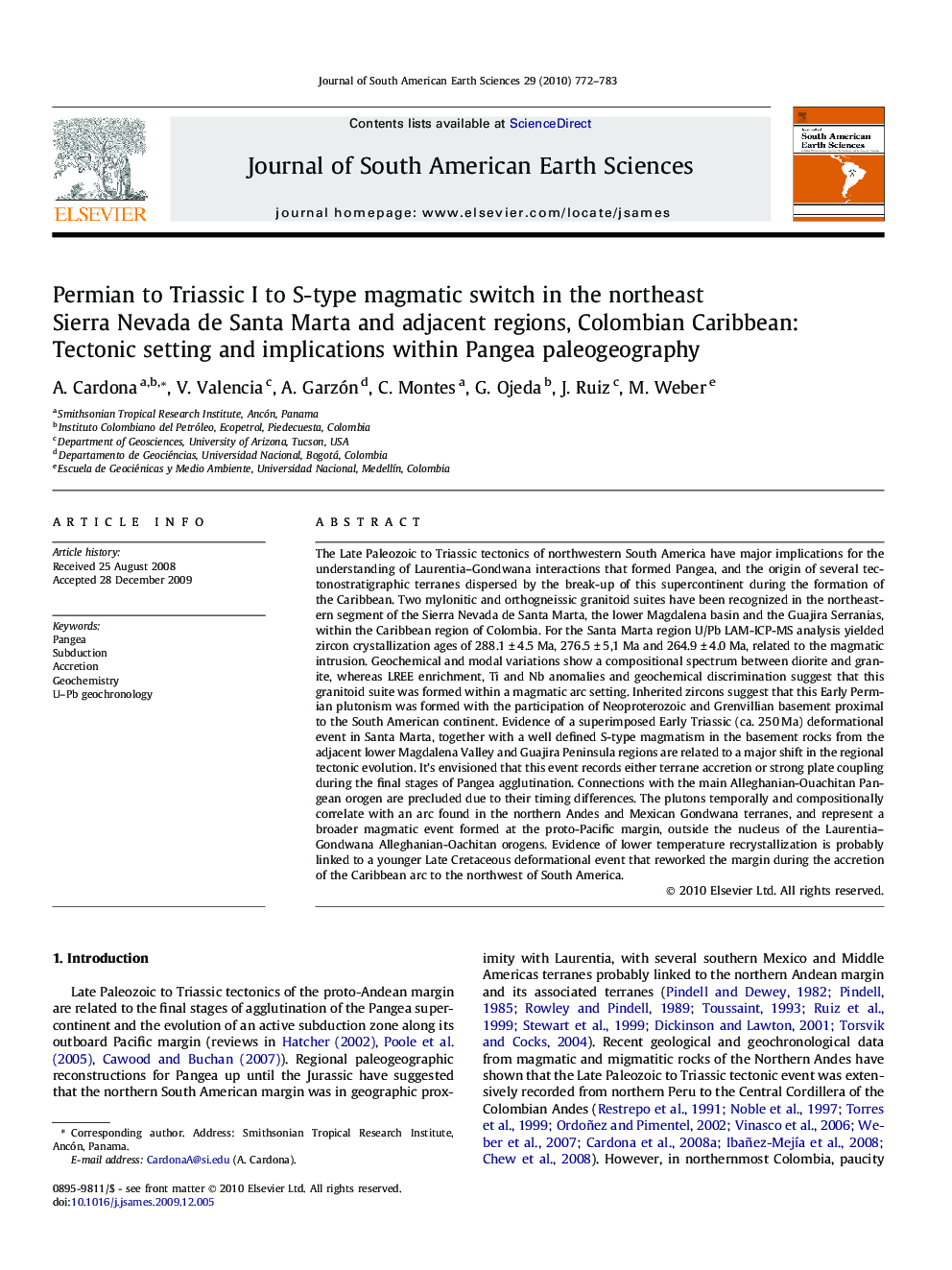| کد مقاله | کد نشریه | سال انتشار | مقاله انگلیسی | نسخه تمام متن |
|---|---|---|---|---|
| 4682663 | 1348934 | 2010 | 12 صفحه PDF | دانلود رایگان |

The Late Paleozoic to Triassic tectonics of northwestern South America have major implications for the understanding of Laurentia–Gondwana interactions that formed Pangea, and the origin of several tectonostratigraphic terranes dispersed by the break-up of this supercontinent during the formation of the Caribbean. Two mylonitic and orthogneissic granitoid suites have been recognized in the northeastern segment of the Sierra Nevada de Santa Marta, the lower Magdalena basin and the Guajira Serranias, within the Caribbean region of Colombia. For the Santa Marta region U/Pb LAM-ICP-MS analysis yielded zircon crystallization ages of 288.1 ± 4.5 Ma, 276.5 ± 5,1 Ma and 264.9 ± 4.0 Ma, related to the magmatic intrusion. Geochemical and modal variations show a compositional spectrum between diorite and granite, whereas LREE enrichment, Ti and Nb anomalies and geochemical discrimination suggest that this granitoid suite was formed within a magmatic arc setting. Inherited zircons suggest that this Early Permian plutonism was formed with the participation of Neoproterozoic and Grenvillian basement proximal to the South American continent. Evidence of a superimposed Early Triassic (ca. 250 Ma) deformational event in Santa Marta, together with a well defined S-type magmatism in the basement rocks from the adjacent lower Magdalena Valley and Guajira Peninsula regions are related to a major shift in the regional tectonic evolution. It’s envisioned that this event records either terrane accretion or strong plate coupling during the final stages of Pangea agglutination. Connections with the main Alleghanian-Ouachitan Pangean orogen are precluded due to their timing differences. The plutons temporally and compositionally correlate with an arc found in the northern Andes and Mexican Gondwana terranes, and represent a broader magmatic event formed at the proto-Pacific margin, outside the nucleus of the Laurentia–Gondwana Alleghanian-Oachitan orogens. Evidence of lower temperature recrystallization is probably linked to a younger Late Cretaceous deformational event that reworked the margin during the accretion of the Caribbean arc to the northwest of South America.
Journal: Journal of South American Earth Sciences - Volume 29, Issue 4, October 2010, Pages 772–783